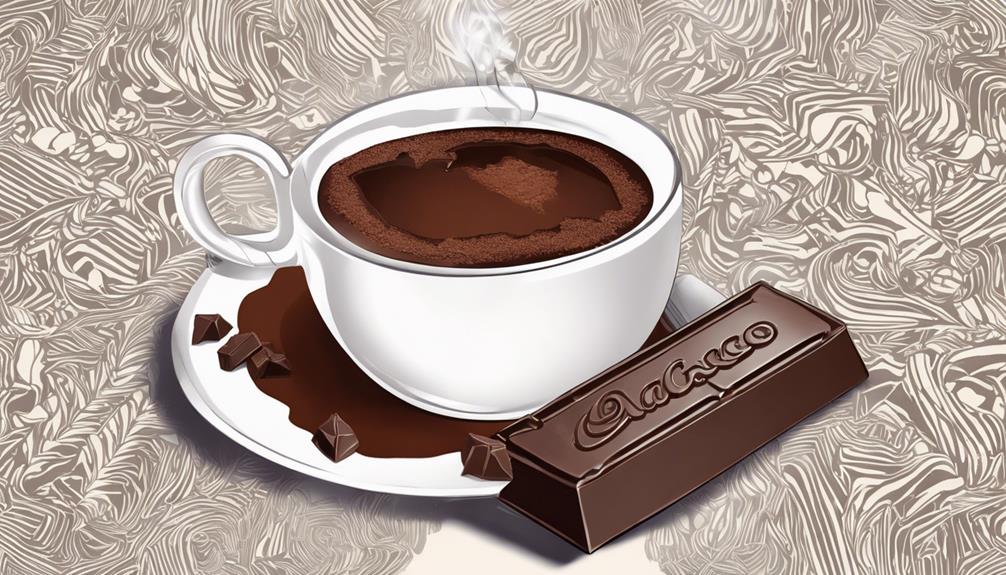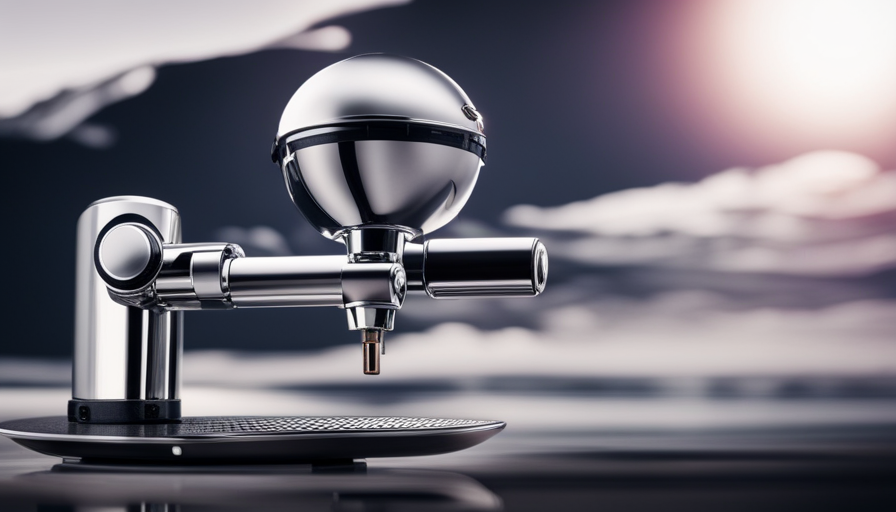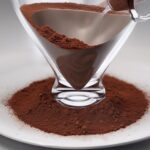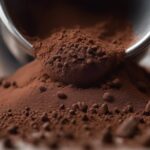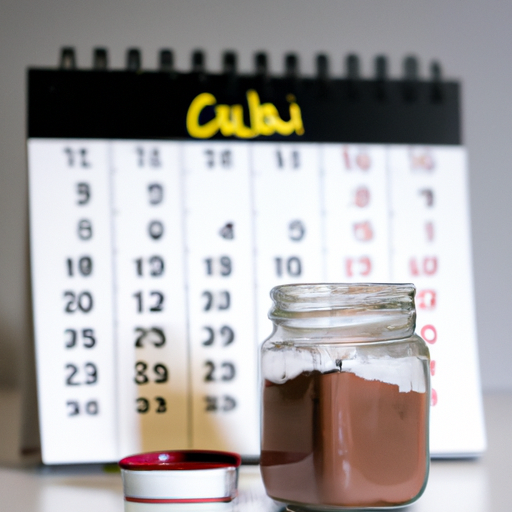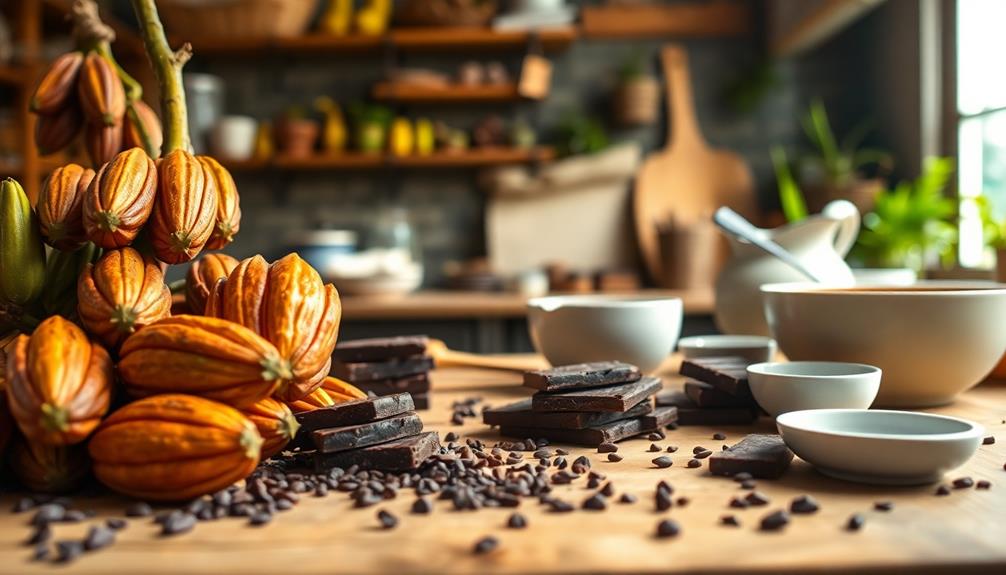I discovered that cacao contains approximately 35mg of caffeine per serving. The primary source of energy in cacao is theobromine, which provides a sustained energy boost without causing jitteriness. The high fat content in cacao helps to mitigate the effects of caffeine on your body, resulting in a milder impact compared to coffee or dark chocolate. If you are interested in learning more fascinating facts about cacao and its caffeine content, there is a wealth of information available to explore its distinct properties.
Key Takeaways
- Cacao contains around 35mg of caffeine per serving.
- The primary stimulant in cacao is theobromine.
- Cacao's caffeine content is lower than coffee or dark chocolate.
- The high fat content in cacao moderates caffeine effects.
- Cacao offers a milder caffeine option for those sensitive to stimulants.
Cacaos Theobromine Content
With a theobromine content 5-10 times higher than caffeine, cacao packs a powerful punch in the domain of natural stimulants. When indulging in ceremonial cacao, one isn't just savoring a delightful treat but also benefiting from the energizing effects of theobromine.
Contrary to popular belief, cacao does contain caffeine, albeit in smaller quantities compared to its theobromine content. In fact, cacao's caffeine levels can range from 0.1-0.3% by weight. A single ounce of cacao can provide approximately 60mg of caffeine, giving you a gentle lift without the jitters often associated with coffee.
If you opt for ceremonial grade cacao, you're getting a pure and unadulterated source of theobromine, ensuring a potent and authentic experience. So next time you sip on a cup of rich hot chocolate made from pure cacao, relish in the fact that you're not just enjoying a delicious beverage, but also reaping the benefits of theobromine's natural stimulation.
Caffeine Levels in Cacao Beans
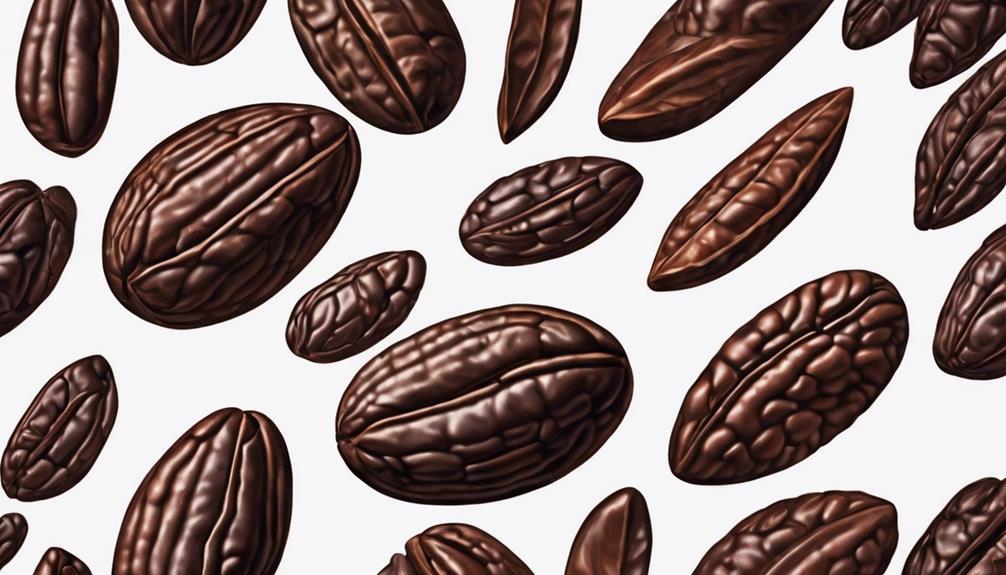
Cacao beans contain around 12.4mg of caffeine per tablespoon, which is lower than coffee. This makes cacao a gentler stimulant option.
When comparing the caffeine levels in cacao to that of coffee, cacao is a milder alternative for those looking to moderate their caffeine intake.
Cacao Bean Caffeine Content
Surprisingly, the caffeine content in cacao beans ranges from 0.1% to 0.3% by weight. When considering the caffeine levels in cacao beans, it's important to understand a few key points:
- Primary Stimulant: Theobromine, not caffeine, is the primary stimulant found in cacao, offering sustained energy without the jitters associated with caffeine.
- Comparative Levels: Cacao's caffeine content is significantly lower than that of coffee or dark chocolate, making it a milder option for those sensitive to caffeine.
- Moderating Effects: The high fat content in cacao helps to moderate the effects of caffeine in the body, providing a balanced and enjoyable consumption experience.
Comparing Cacao to Coffee
When comparing the caffeine content of cacao to coffee, it becomes evident that cacao offers a milder option for those seeking a lower caffeine intake. Cacao powder contains approximately 12.4mg of caffeine per tablespoon, making it a suitable alternative for individuals sensitive to caffeine. This amount is notably lower than what you'd find in a cup of coffee.
Cacao nibs also share a similar caffeine content to powdered cacao, providing a consistent level of stimulation. It's crucial to mention that while cacao can offer a natural energy boost due to the theobromine it contains, those who are sensitive to caffeine should still exercise caution when consuming cacao products to avoid any adverse effects.
Comparing Caffeine in Cacao Vs. Coffee
When comparing the caffeine content in cacao versus coffee, it's crucial to mention that cacao contains notably less caffeine than coffee. A tablespoon of cacao has around 12.4mg of caffeine, whereas an 8-ounce cup of coffee can contain 70-120mg of caffeine.
This difference makes cacao a milder stimulant compared to the strong caffeine punch found in coffee.
Cacao Caffeine Content
Comparing the caffeine content in cacao to that in coffee reveals a significant difference in stimulant levels between the two. When considering the amount of caffeine in cacao powder, understanding its impact compared to coffee is crucial.
Here are three key points to keep in mind:
- Cacao contains approximately 12.4mg of caffeine per tablespoon of cacao powder, as per the USDA data.
- Cacao nibs share a caffeine content similar to cacao powder, making them a comparable caffeine source.
- The caffeine content in cacao is significantly lower than that found in coffee, providing a milder stimulant effect, which can be beneficial for those sensitive to caffeine.
Coffee Caffeine Comparison
Moving on to the comparison between caffeine levels in cacao and coffee, the difference in stimulant content becomes evident. While one tablespoon of cacao powder contains approximately 12.4mg of caffeine, an 8-ounce cup of coffee typically boasts between 70-120mg of caffeine, surpassing cacao in caffeine content. This stark contrast positions cacao as a milder stimulant in comparison to coffee.
Cacao is often praised for being more heart-focused and not just a source of caffeine, offering essential nutrients alongside its lower caffeine levels. Additionally, cacao's theobromine content, which is 5-10 times higher than its caffeine content, provides a unique and distinctive energy experience when consumed.
Effects of Cacaos Caffeine on Health

Exploring the effects of caffeine from cacao on health reveals its unique stimulant properties and potential benefits for overall well-being. Cacao contains around 35mg of caffeine per serving, which provides a mild stimulant effect compared to coffee. The primary stimulant in cacao is theobromine, offering sustained energy without causing overstimulation, making it a great alternative for those sensitive to caffeine jitters. Additionally, cacao's high flavanol content, which is naturally occurring, contributes to its positive effects on health by supporting cardiovascular health and potentially improving cognitive function.
Incorporating cacao into your diet can offer a balanced stimulant experience due to its high fat content, which helps moderate the effects of caffeine in the body. This unique combination of compounds in cacao influences brain chemistry positively, potentially enhancing mood and focus. Understanding the transparency about caffeine content in cacao enhances consumer awareness of its effects on health, empowering individuals to make informed choices for their well-being.
Cacao Vs. Cocoa: Caffeine Differences
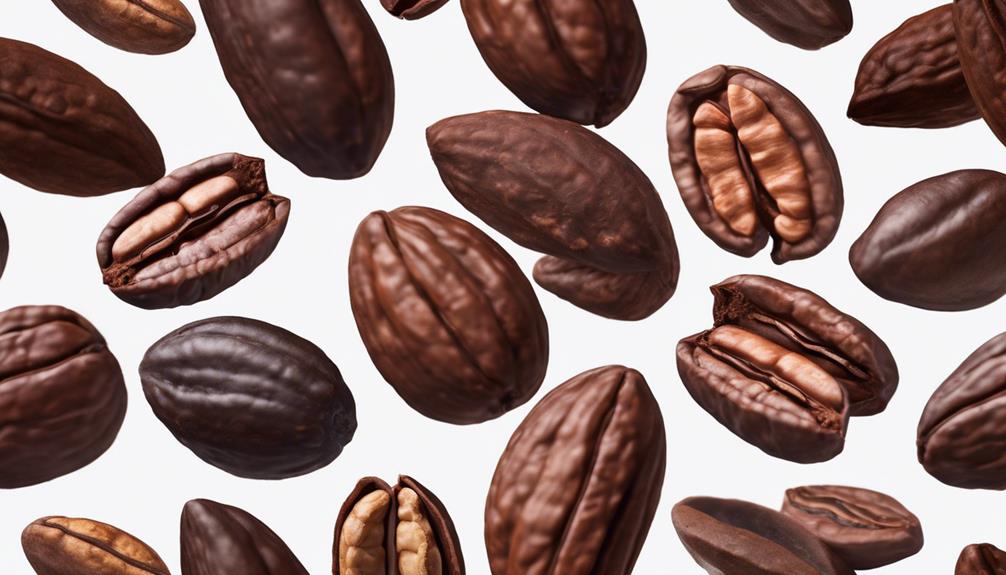
After discussing the effects of caffeine from cacao on health, it becomes important to differentiate between cacao and cocoa with respect to their caffeine content.
Cacao powder contains around 12.4mg of caffeine per tablespoon, a notably lower amount than what's found in coffee. Similarly, cacao nibs have a similar caffeine content to cacao powder, making them a moderate source of this stimulant. It's essential to mention that individuals sensitive to caffeine should approach cacao consumption with caution due to its stimulating properties.
On the other hand, cocoa powder, often confused with cacao, also contains caffeine but in lower quantities compared to cacao. The caffeine content in cocoa powder can vary depending on the processing methods. While both cacao and cocoa come from the cacao bean, they undergo different processes that affect their caffeine levels. Understanding these differences can help individuals make informed choices based on their caffeine tolerance and preferences.
Recommended Cacao Intake for Energy
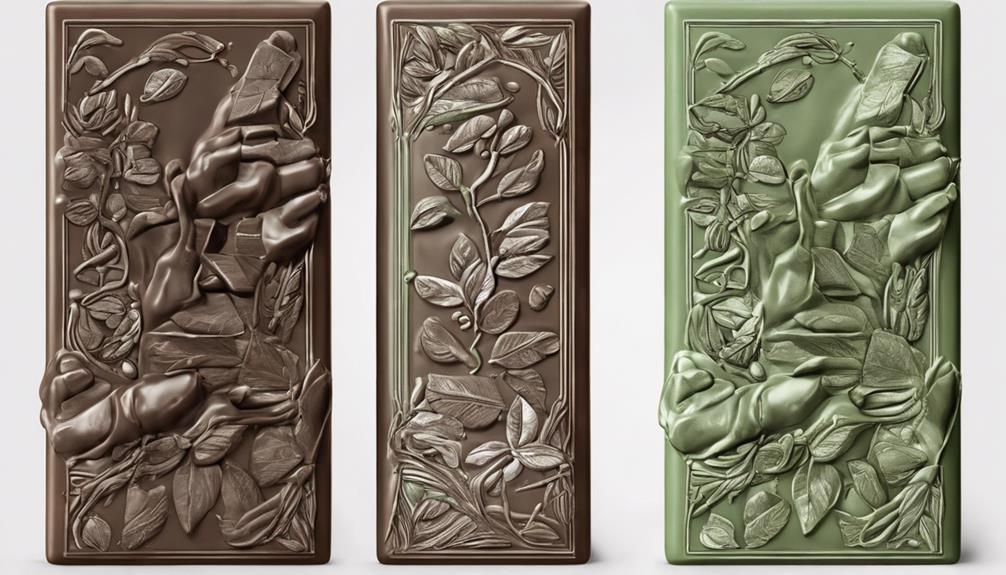
Cacao consumption for sustained energy levels is recommended due to its moderate caffeine content. When considering your cacao intake for energy, keep in mind the following:
- Cacao beans contain approximately 35mg of caffeine per serving, providing a gentle energy boost without causing overstimulation.
- The theobromine found in cacao offers a unique stimulant experience that differs from the effects of coffee, promoting sustained energy levels throughout the day.
- Transparency about caffeine content in cacao products is essential for making informed consumption choices, allowing you to regulate your intake and enjoy the benefits of cacao without unwanted side effects.
Debunking Cacao Caffeine Myths
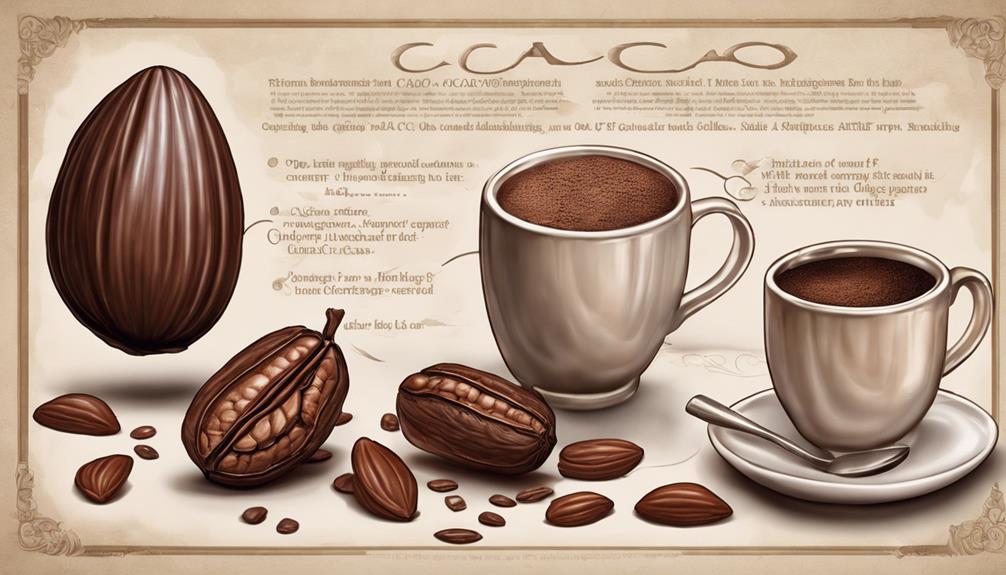
Occasionally misunderstood, the caffeine content in cacao is often overestimated, leading to misconceptions about its effects on the body. Contrary to popular belief, cacao contains only around 35mg of caffeine per serving, which is lower than what you'd find in coffee or dark chocolate. The primary stimulant in cacao is theobromine, which provides sustained energy without causing overstimulation.
Additionally, the high fat content in cacao helps to moderate the effects of caffeine in the body, resulting in a more balanced and gradual energy boost.
It's important to note that cacao contains complex compounds that positively influence brain chemistry, offering unique benefits beyond just caffeine stimulation. This means that the caffeine effect you experience from cacao differs from that of coffee due to its distinctive composition. So, next time you enjoy some dark chocolate or a cacao-based treat, rest assured that the caffeine content isn't as high as you might've thought, and its effects are more nuanced and beneficial than you realize.
Cacao-Infused Beverages and Caffeine
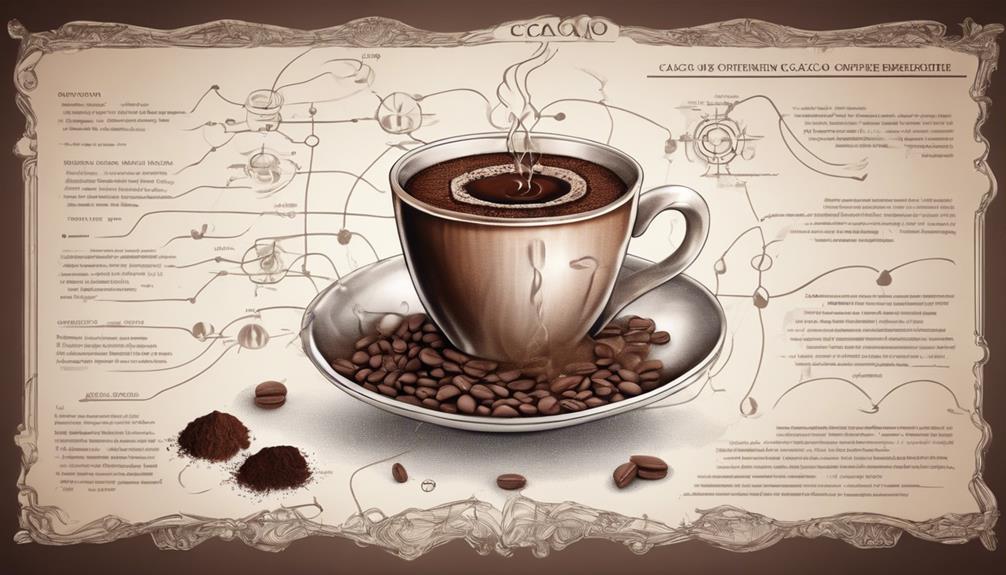
Misconceptions about cacao's caffeine content often overshadow the fact that cacao-infused beverages typically contain around 35mg of caffeine per serving. When savoring cacao-infused beverages, it's crucial to grasp how caffeine interacts with our bodies. Here are three key points to bear in mind:
- Caffeine Content: Cacao-infused beverages provide a moderate amount of caffeine, which can offer a gentle energy boost without the jitters commonly associated with coffee.
- Theobromine: While caffeine is present in cacao, the primary stimulant is theobromine. Theobromine provides sustained energy and a smoother buzz compared to caffeine, making cacao a unique source of stimulation.
- Effect of Fat: Cacao's high fat content helps slow down the effects of caffeine in the body. This means that the caffeine experience from cacao is often more gradual and longer-lasting than from other sources.
Understanding the interplay between caffeine content, theobromine, and fat in cacao-infused beverages can enhance your enjoyment and appreciation of these delightful drinks.
Frequently Asked Questions
Does Cacao Have More Caffeine Than Coffee?
Cacao has less caffeine than coffee, offering a milder stimulant effect. It contains about 12.4mg per tablespoon compared to 70-120mg in coffee. Theobromine in cacao provides sustained energy, making it a gentler choice for caffeine-sensitive folks.
Does Cocoa Powder Have High Caffeine?
Cocoa powder doesn't have high caffeine content; it's about 12.4mg per tablespoon. Even though it's less than coffee or dark chocolate, those sensitive to caffeine should still be cautious. Theobromine in cocoa offers a unique energy boost.
Does Cacao Keep You Awake?
Cacao can keep me awake due to its mild caffeine content. However, the theobromine in cacao provides sustained energy without disrupting sleep. Moderating caffeine effects with its high fat content, cacao is a better option for evening consumption.
Is There Caffeine in Full Power Cacao?
Absolutely, Full Power Cacao does contain caffeine. It offers about 35mg per serving. This unique stimulant experience, distinct from coffee, is powered by theobromine. Its rich complexity and fat content provide sustained energy.
What Are the Different Forms of Cacao and Their Caffeine Content?
When it comes to the different forms of cacao, the caffeine content in cacao nibs is worth noting. Cacao nibs contain about 12-40 mg of caffeine per ounce, while cacao powder contains about 12 mg per tablespoon. Cacao beans, on the other hand, have a slightly higher caffeine content than nibs.
Conclusion
To sum up, cacao contains theobromine, a compound similar to caffeine that provides energy without the jitters. While cacao does have some caffeine, it's much less than coffee.
For example, a square of dark chocolate can give you a gentle energy boost without the crash. Remember, moderation is key when consuming cacao for its caffeine content.
Enjoy your cacao treats in moderation for a delicious and energizing experience!

